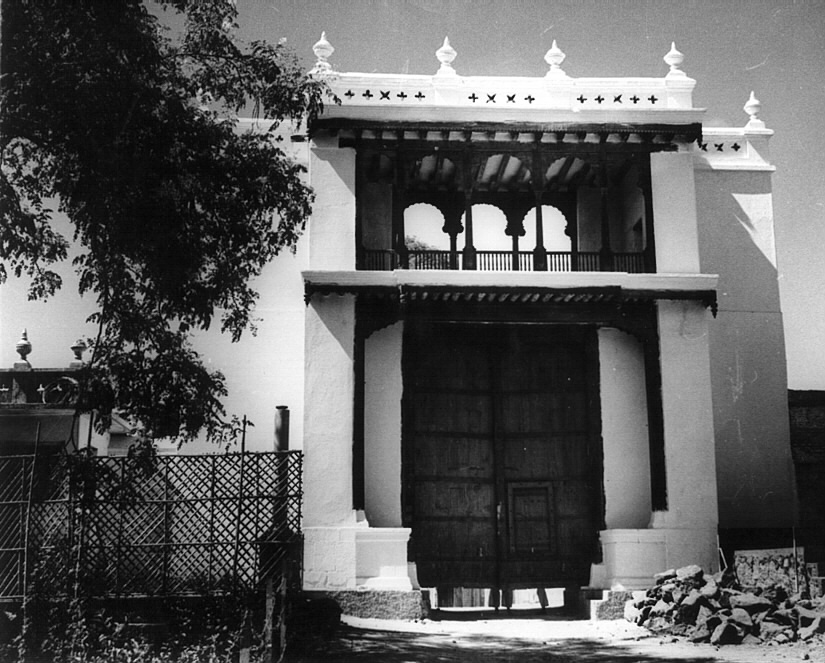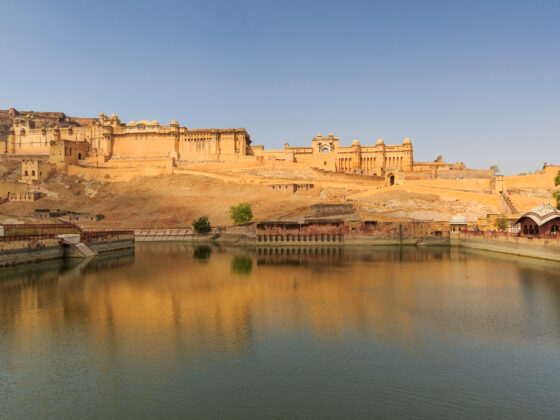Naukhanda Palace, Aurangabad: A Forgotten Marvel of Mughal

Introduction
Aurangabad, a city steeped in history, boasts several architectural wonders from the Mughal era. Among them, the Naukhanda Palace stands as a significant yet lesser-known marvel of medieval architecture. Malik Ambar, the Prime Minister of the Ahmadnagar Sultanate, built this grand palace in the 17th century. This magnificent structure reflects the architectural brilliance of the time. Over the years, it has retained its cultural and historical importance despite historical transformations.
Historical Background
Malik Ambar commissioned the Naukhanda Palace in 1616 AD, when Aurangabad was known as Khadki. Later, Mughal Emperor Aurangzeb expanded it after making Aurangabad his capital during his Deccan campaigns. The palace served as a residence for Mughal governors and played a crucial role in administrative affairs.
Malik Ambar, an Ethiopian-origin general, became famous for his military strategies and urban planning. Under his supervision, Aurangabad developed into a well-planned city, and Naukhanda Palace emerged as one of its finest architectural highlights.
Architectural Brilliance of Naukhanda Palace
The term “Naukhanda” translates to “nine apartments”, signifying the nine divisions within the palace. This magnificent structure showcases a blend of Persian, Mughal, and Deccan architectural influences, making it a unique historical site.
Structural Layout
The Naukhanda Palace spreads across a vast area and includes several key features, such as:
- Main Gateway: An imposing gateway provides access to the grand complex.
- Central Courtyard: A large courtyard forms the heart of the palace, flanked by elegant halls and residential quarters.
- Audience Halls: These halls, adorned with stunning stucco work and decorative elements, hosted important meetings and gatherings.
- Royal Apartments: The palace housed luxurious residential sections for the ruling elite.
- Garden Complex: Inspired by Persian-style gardens, the palace once featured beautiful landscapes and water channels.
- Mosques and Water Reservoirs: The complex also contained mosques and step-wells, emphasizing the significance of spirituality and water conservation.
Decorative Elements
The palace interiors display intricate carvings, floral motifs, and geometric patterns, demonstrating the skilled craftsmanship of Mughal-era artisans. The use of stucco and fresco techniques in wall decorations adds to its visual appeal.
Cultural and Historical Significance
The Naukhanda Palace symbolizes Mughal power and Deccan heritage, representing a time of political and cultural confluence. Although overshadowed by other Mughal monuments, it played an essential role in shaping Aurangabad’s history.
- Strategic Importance: Influential figures such as Mughal governors resided in the palace, making it central to administrative decisions.
- Architectural Influence: Naukhanda Palace’s design inspired subsequent constructions in the region, contributing to Deccan’s unique architectural identity.
- Cultural Heritage: Historians and archaeologists regard the palace as a crucial site for studying Mughal-era structures in the Deccan region.
Current Condition and Preservation Efforts
Despite its historical significance, Naukhanda Palace faces neglect and decay. Many parts of the structure have deteriorated due to inadequate maintenance, while some sections remain in relatively better condition.
Challenges in Preservation
- Encroachment: Surrounding urban development has affected the palace’s original layout.
- Neglect & Lack of Awareness: The monument does not receive as much attention as other heritage sites like Bibi Ka Maqbara.
- Weathering & Damage: Natural elements have caused erosion of intricate carvings and structural integrity.
Steps Towards Restoration
- Government Initiatives: Authorities have proposed including Naukhanda Palace in Aurangabad’s heritage conservation projects.
- Tourism Promotion: Raising awareness about the site through digital media and tourism campaigns can help garner public interest.
- Community Involvement: Local heritage enthusiasts and historians continue advocating for its restoration and preservation.
How to Visit Naukhanda Palace
For history lovers and architecture enthusiasts, Naukhanda Palace remains a must-visit site.
- Location: The palace stands in the heart of Aurangabad, Maharashtra.
- Best Time to Visit: The winter months (October–February) offer a pleasant climate for exploration.
- Nearby Attractions: Visitors can explore other historical sites such as Bibi Ka Maqbara, Daulatabad Fort, and Panchakki.
Conclusion
The Naukhanda Palace is a remarkable yet underappreciated gem in Aurangabad’s architectural landscape. Built with grandeur and historical importance, this palace stands as a testament to Mughal and Deccan heritage. Although it has endured the ravages of time, restoration efforts and increasing awareness can help revive its lost glory. By acknowledging and preserving such historical landmarks, we ensure that the rich legacy of India’s past continues to inspire future generations.
As visitors walk through the remnants of Naukhanda Palace, they uncover tales of royalty, power, and artistry, reminding us of the architectural brilliance that once graced the Deccan region.







